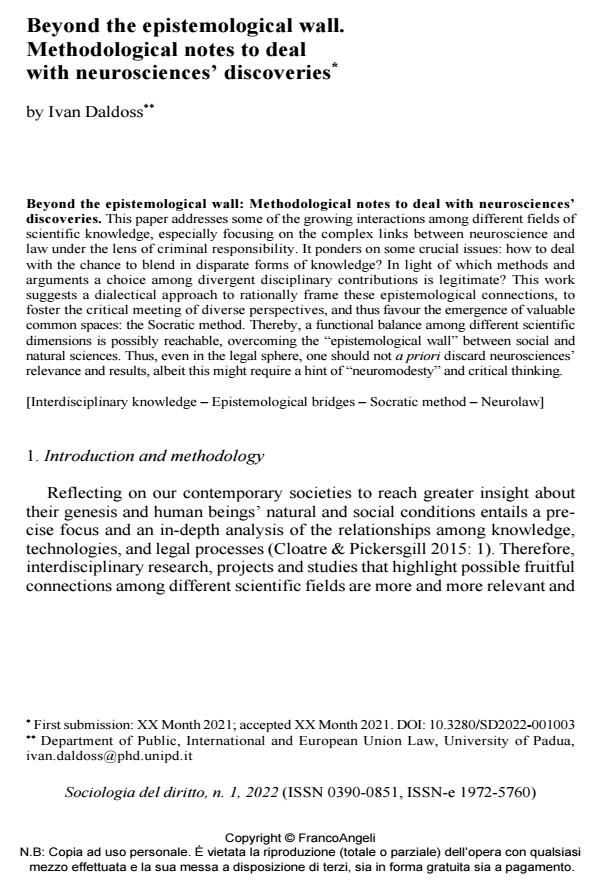Beyond the epistemological wall. Methodological notes to deal with neurosciences’ discoveries
Titolo Rivista SOCIOLOGIA DEL DIRITTO
Autori/Curatori Ivan Daldoss
Anno di pubblicazione 2022 Fascicolo 2022/1
Lingua Inglese Numero pagine 18 P. 53-70 Dimensione file 259 KB
DOI 10.3280/SD2022-001003
Il DOI è il codice a barre della proprietà intellettuale: per saperne di più
clicca qui
Qui sotto puoi vedere in anteprima la prima pagina di questo articolo.
Se questo articolo ti interessa, lo puoi acquistare (e scaricare in formato pdf) seguendo le facili indicazioni per acquistare il download credit. Acquista Download Credits per scaricare questo Articolo in formato PDF

FrancoAngeli è membro della Publishers International Linking Association, Inc (PILA)associazione indipendente e non profit per facilitare (attraverso i servizi tecnologici implementati da CrossRef.org) l’accesso degli studiosi ai contenuti digitali nelle pubblicazioni professionali e scientifiche
This paper addresses some of the growing interactions among different fields of scientific knowledge, especially focusing on the complex links between neuroscience and law under the lens of criminal responsibility. It ponders on some crucial issues: how to deal with the chance to blend in disparate forms of knowledge? In light of which methods and arguments a choice among divergent disciplinary contributions is legitimate? This work suggests a dialectical approach to rationally frame these epistemological connections, to foster the critical meeting of diverse perspectives, and thus favour the emergence of valuable common spaces: the Socratic method. Thereby, a functional balance among different scientific dimensions is possibly reachable, overcoming the "epistemological wall" between social and natural sciences. Thus, even in the legal sphere, one should not a priori discard neurosciences’ relevance and results, albeit this might require a hint of "neuromodesty" and critical thinking.
Parole chiave:Interdisciplinary knowledge - Epistemological bridges - Socratic method - Neurolaw
Ivan Daldoss, Beyond the epistemological wall. Methodological notes to deal with neurosciences’ discoveries in "SOCIOLOGIA DEL DIRITTO " 1/2022, pp 53-70, DOI: 10.3280/SD2022-001003